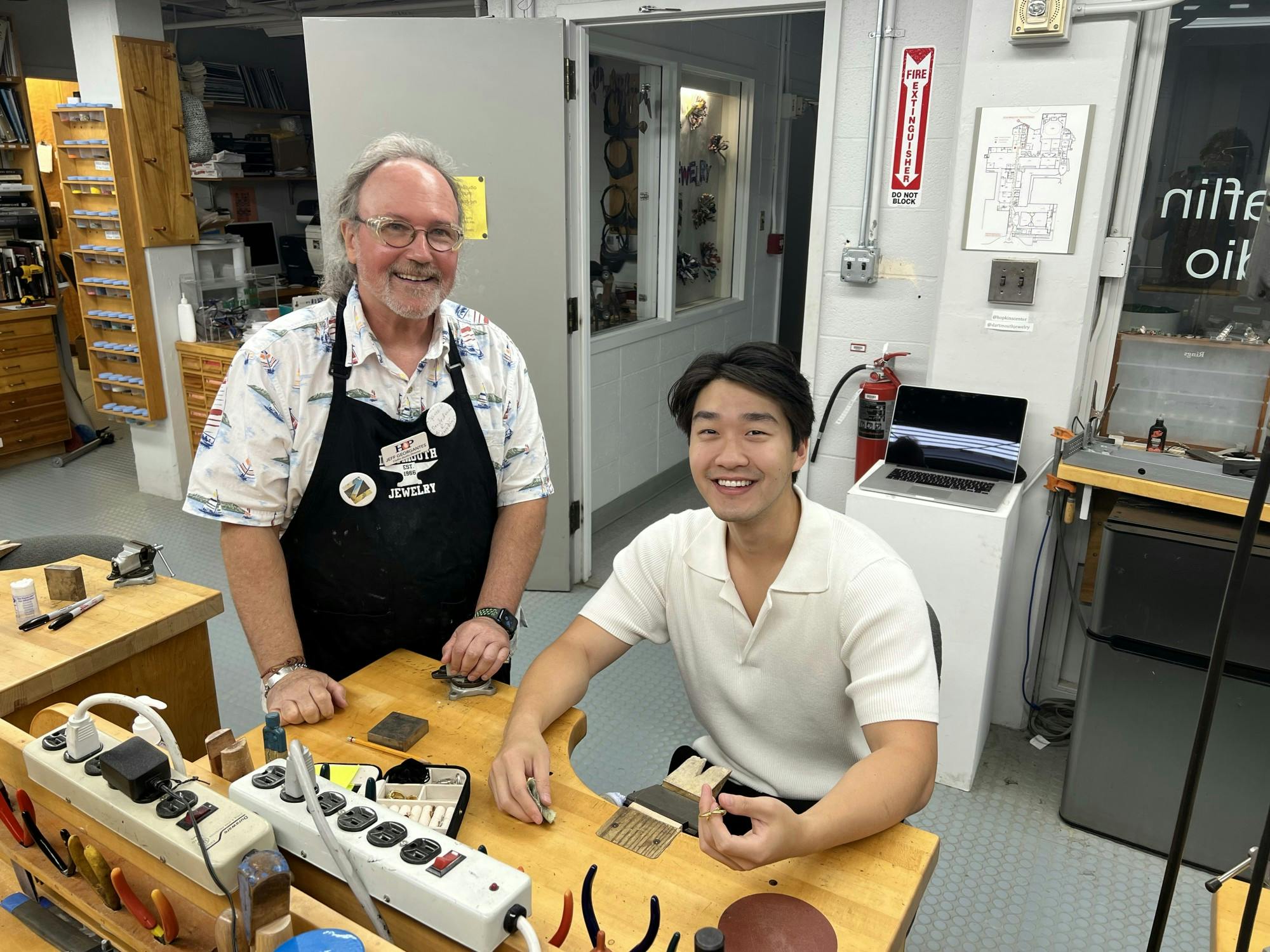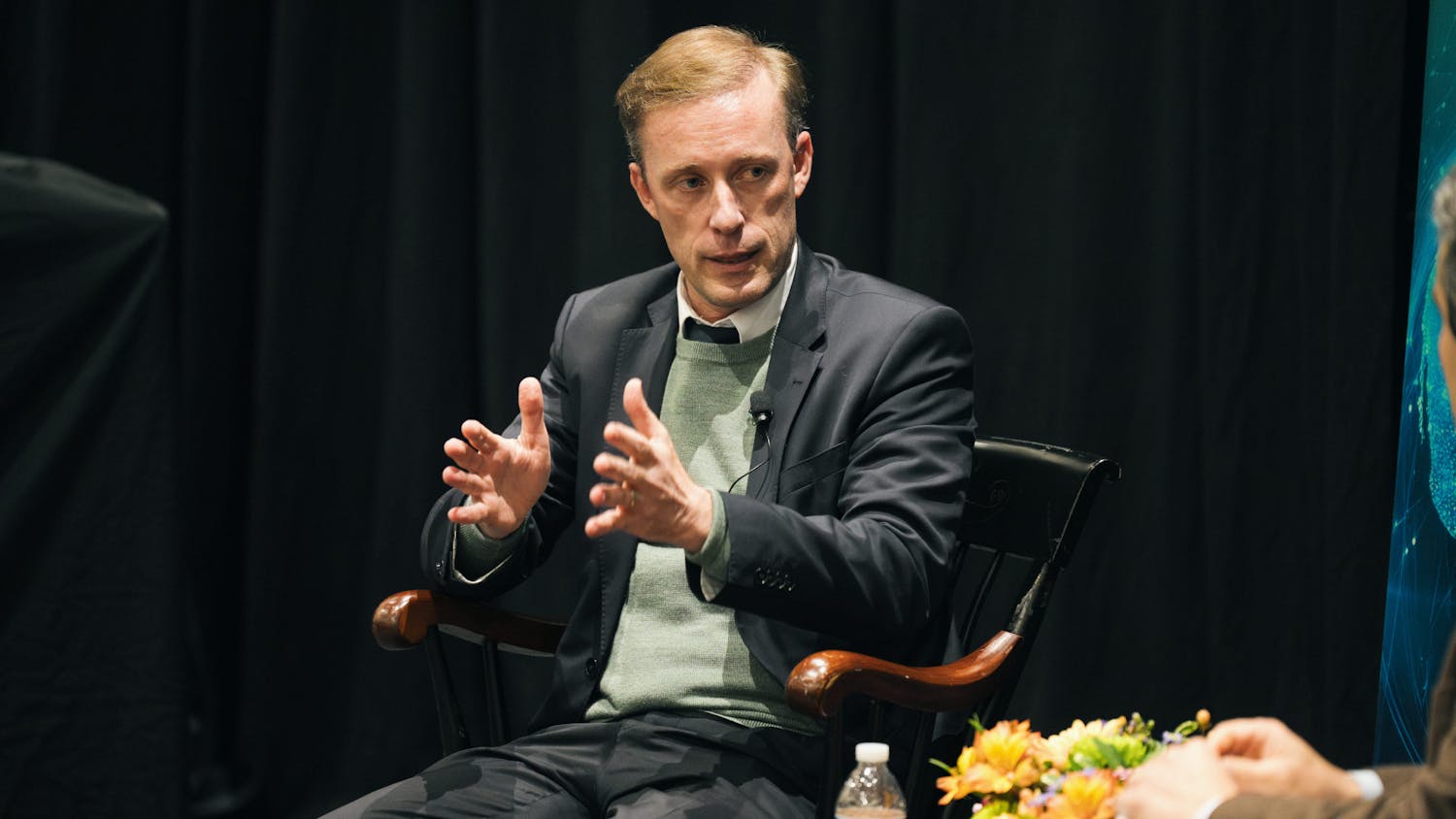The Donald Claflin Jewelry Studio, situated in the basement of the Hopkins Center for the Arts, provides an open studio space for students who are interested in making jewelry and metalsmithing. The space is equipped with student workbenches that feature a variety of jewelry-making tools, as well as professional jewelry artists and trained student assistants to mentor students hoping to learn more about the craft. The Dartmouth sat down with studio director Jeff Georgantes to learn more about what resources the space offers and how it contributes to the broader Dartmouth community.
How did you become the director of the jewelry studio, and what inspired you to pursue the position?
JG: I’ve actually been making jewelry since I was in high school, which was a long time ago. In my early 30s, I fell into a job teaching jewelry-making at a local college where I lived in northern California. I had that job for about 15 or 16 years and just felt like I was ready for a change. I applied for a number of positions and ended up getting the Dartmouth job and moving to New Hampshire.
How has your current position at Dartmouth differed from the position that you held previously in California?
JG: Well, the biggest difference is that academic classes are pretty structured, and there are a lot of guidelines. What’s different about the Claflin Studio is that it operates like a makerspace, so there are no grades. People work at their own pace. Most importantly, nobody really has to be here, so everybody in this position, everybody who uses our space is here because they want to be. We get a lot of students who use our resources and our expertise for academic projects, but we’re not the ones who are doing the grading.
You mentioned you’ve been making jewelry since high school. What types of jewelry projects do you most enjoy pursuing?
JG: I have a master’s in sculpture and a master’s in jewelry and metalsmithing. So within my career, I’ve worked on things from precision precious stone setting all the way up to large bronze sculptures. But I think what I enjoy doing the most is taking advantage of my skills as a diamond setter and precious stone setter — I use those techniques to set objects that I find in my travels and set them using traditional techniques, like maybe a beach rock, or some kind of found object like a bottle cap or a small toy. That’s really my favorite: to use the skills that I have to set things in imaginative ways.
What are some examples of notable projects that students have worked on in the studio recently?
JG: During sophomore summer, there are fewer students on campus, so there’s a general sense of things being more relaxed. There are always some students who take advantage of this time and come more frequently and get to go more in depth. There are a couple of students who are here really every day, and one of them is a student who dove straight into working with gold, making some designs for his mom. Because he’s here every day working, he’s been able to accomplish a lot within a really short period of time. He just finished this 18-karat gold ring. And we also have a couple of students who are making wedding rings this summer, so those are two projects that are happening this summer that are pretty special.
What kinds of resources does the jewelry studio have for students, and what is possible for students with those resources?
JG: We can do pretty much anything, from low-tech to high-tech. I told you about the student working with gold this summer, but we also have a lot of students working with beads and pretty basic silver rings. We have a number of go-to projects for people who show up and don’t have an idea of what it is they want to do, and we act like jewelry counselors and suggest projects to get them started. We have this one ring that can be interpreted in a bunch of different ways. From fall 2021 to now, we probably made about 350 of these. It’s a very popular project.
How do professors use the jewelry studio as a teaching tool?
JG: We do a lot of demonstrations for academic classes. Last term, we did a casting demonstration for a sculpture class, because as far as I know, we have the only metal casting facilities and equipment on campus. We also partnered with the Native American studies program and the Indigenous art program through the Hood Museum of Art and brought in a Navajo jeweler named Nanibaa Beck. She taught a series of workshops for Dartmouth students, on-campus Indigenous students and for the Native American Art and Material class.
What goals do you have for the jewelry studio in the upcoming year?
JG: This year is going to be a challenging year for us. You probably have heard that the Hopkins Center is going to close for renovations at the end of fall term. So fall term, we’re going to be going like gangbusters trying to take advantage of this space while we still have it. Then starting in December, we’re going to move to a new home for a couple of years. As far as a goal, it’s going to be to keep the studio operating while we make this transition into a new space.
What role do you think that the jewelry studio plays in the wider Dartmouth community?
JG: I think of the jewelry studio as kind of like a clubhouse, and the conditions for membership to this club is that you’re a Dartmouth student and that you walked through the door. Students often come in and find a home here. Here, I often meet students before they start college through the various pre-campus visits and work with them all the way up until they graduate. It is such an honor and a privilege to watch students go from the end of their years of being a teenager to young adults. That’s a big way that the studio plays an important role in the greater Dartmouth community: A lot of students come here all four years and make this place a second home.
This interview has been edited and condensed for clarity and length.
Arielle Feuerstein ’24 is an English major from Bethesda, Maryland. She currently serves as the production executive editor, and in the past, she wrote and edited for Mirror. In addition to writing, Arielle enjoys crocheting, board games and walks around Occom Pond.




